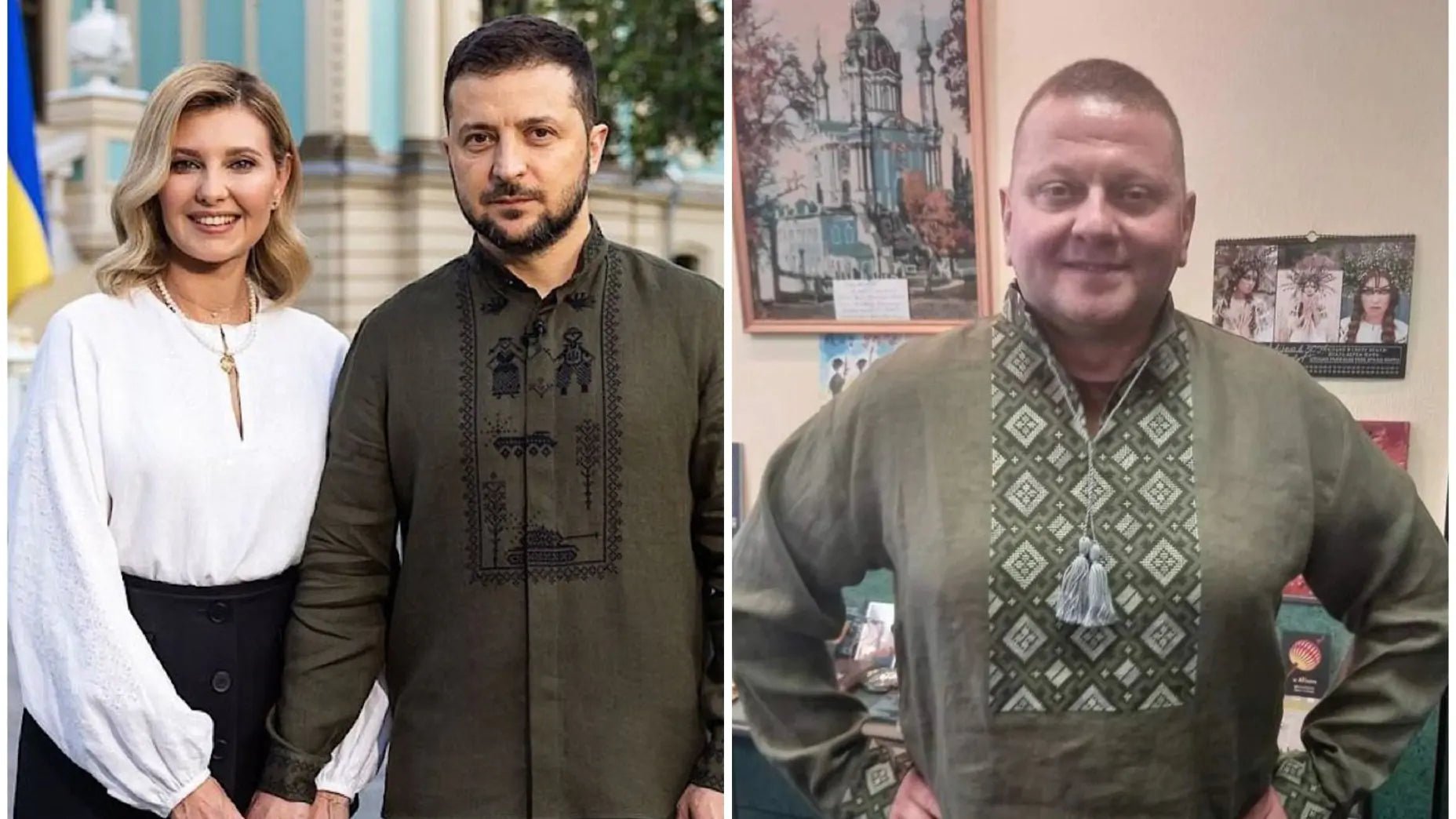If you've been closely following Ukrainian political leaders, cultural figures, or everyday heroes, you may have noticed them adorned in the captivating attire of embroidered shirts known as vyshyvankas. Vyshyvanka, deriving from the Ukrainian word for traditional embroidered shirts or dresses, stands as a centerpiece of Ukraine's national attire. Usually crafted from linen, these shirts boast intricate designs, rich in color, often depicting elements of Ukraine's landscape or cultural heritage.
Historically, vyshyvankas were a staple in the wardrobes of both men and women across Ukrainian villages, each region showcasing unique and distinct variations. Today, they are predominantly donned during national holidays and celebratory occasions.
In recent years, vyshyvankas have experienced a resurgence in popularity, fueled by a growing interest in Ukrainian national identity following pivotal events. russia's full-scale invasion of Ukraine in February 2022 has further cemented the vyshyvanka as a symbol of resilience and unity in the face of adversity in Ukraine and the world.
Olena Zelenska, Volodymyr Zelensky and Valeriy Zaluzhnyi wearing vyshyvankas.
The History of a Vyshyvanka Shirt
Vyshyvankas, believed to have originated as early as the fifth century in Ukraine, trace their roots back to the Scythians, an ancient nomadic group inhabiting the region that is now modern-day Ukraine and southern russia. Archaeological findings, including statues of Scythian women adorned with elements resembling the iconic vyshyvanka patterns, offer glimpses into its early existence.
Embroidery from the Kyivan Rus era, spanning the 10th to 12th centuries, showcases intricate designs featuring anthropomorphic motifs, depictions of flora and fauna, and a plethora of geometric shapes. During this period, men's shirts typically had embroidery near the collar, while women's attire featured elaborate embellishments, notably adorning the collar, sleeves, and skirt hem.
In the 11th century, Anna Vsevolodovna, sister of Volodymyr Monomakh, Grand Prince of Kyivan Rus from 1113 to 1125, established a school for girls dedicated to the art of embroidery, further elevating its significance in Ukrainian culture.
A Ukrainian couple wearing vyshyvankas (photo courtesy of Museum of Ivana Honchara)
References to embroidered garments abound in historical texts such as “The Tale of Igor's Campaign,” an anonymous epic poem from the late 12th century, and the Hypatian Codex, a collection of chronicles discovered in present-day Ukraine in 1617. These literary sources provide valuable insights into the rich tradition of Ukrainian embroidery, preserving its legacy for future generations.
Embroidery as a Tapestry of Symbols
Traditionally, Ukrainian embroidery embraces a spectrum of six primary colors, each imbued with its own profound significance. Red and black stand as the quintessential hues in vyshyvanka patterns. Red symbolizes good fortune, happiness, and love, while black, paradoxically, signifies wisdom and prosperity in Ukrainian tradition, often representing the nation's fertile soil. In certain regions, black embellishments adorn vyshyvankas for weddings, symbolizing wishes for wealth and marital strength.
White evokes notions of purity, innocence, and sanctity in Ukrainian embroidery, while blue traditionally adorns men's vyshyvankas, particularly those destined for battle, believed to ward off ailments and offer solace. Yellow mirrors the sun's radiance and the abundance of wheat, epitomizing prosperity and joy, while green embodies the vibrancy of spring and the vitality of youth.
Vyshyvanka patterns of different regions of Ukraine.
The intricacies of vyshyvanka designs vary across regions, often serving as markers of specific villages or communities. In Kyiv Oblast, geometric and botanical motifs dominate, featuring stylized clusters of grapes, hops, or eight-petal rosettes, accented by hues of white, coral-red, and black. Southern oblasts boast polychromatic ornamentation, notably crosses, while western Ukraine boasts a myriad of village-specific patterns, each unique in its expression of cultural heritage and identity.
Who can wear a Ukrainian vyshyvanka and when?
We frequently encounter a question from those outside Ukraine: "Can I wear a vyshyvanka without it being cultural appropriation?" The straightforward answer is, unless you're russian, wearing a vyshyvanka is completely acceptable. In fact, Ukrainians deeply appreciate seeing foreigners donning vyshyvankas as a gesture of respect and solidarity, especially during these challenging times.
While many Ukrainians reserve vyshyvankas for special occasions such as Easter, Vyshyvanka Day (May 16), or Independence Day (August 24), there are no strict rules dictating when you can wear one. Feel free to incorporate it into your everyday wardrobe, whether it's as a casual statement piece or as part of a more formal ensemble. The versatility of the vyshyvanka allows it to seamlessly blend into any style, serving as both a fashion statement and a symbol of cultural appreciation.
Pablo Picasso wearing a vyshyvanka.



Comment5
Thank you for the explainer on the meaning of the Vyshyvanka. It’s a beautiful custom.
Thank you for sharing this very interesting and important cultural information. Myself and others around the world have learned so many magnificent things about Ukraine over the years. Ukrainian victory is imperative. Ukrainian culture and independence must be preserved and flourish. Thank you! 💙🇺🇦💛
I bought two men’s shirts for us to wear on special occasions. We will be wearing them to a niece’s wedding in a few weeks. Slave Ukraini! Heroyam Slava!
Love the Blog! I will be purchasing vyshyvanka to shoe my support for Ukraine and the Ukranian dream!
Slava Ukraini! And let freedom ring!